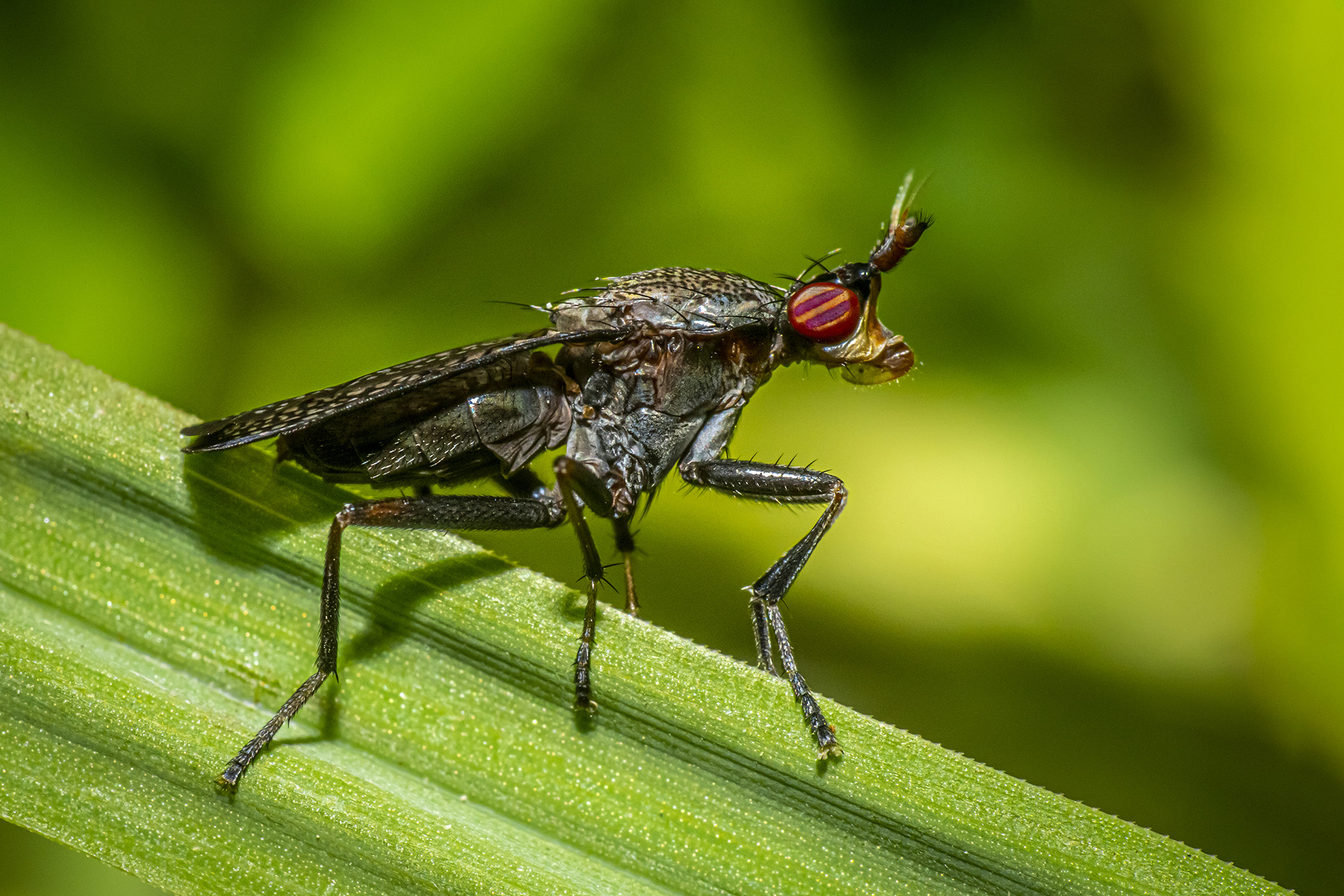The Sieve-winged Snailkiller (Coremacera marginata) is a unique and interesting species of fly belonging to the family Sciomyzidae, commonly known as marsh flies or snail-killing flies. Here’s a detailed overview of this intriguing insect:
Description
- Size: Coremacera marginata is a medium-sized fly, measuring about 6-9 millimeters in length.
- Appearance:
- Body: The body is elongated and slender, typically dark brown or black with a slight metallic sheen.
- Wings: The wings are notable for their distinct, sieve-like pattern of dark spots and clear areas, which gives them their common name.
- Head: The head features large, reddish-brown compound eyes and relatively short antennae. The face is often pale with darker markings.
- Legs: The legs are long and slender, aiding in their agility and ability to move quickly.
Habitat
- Distribution: Coremacera marginata is widespread across Europe and parts of Asia. It prefers temperate regions.
- Preferred Environment: These flies are commonly found in wetlands, marshes, and other damp environments where their prey, primarily snails, are abundant. They are often seen in vegetation near water bodies.
Behavior and Ecology
- Diet:
- Adults: Adult flies feed on nectar and other plant secretions.
- Larvae: The larvae are specialized predators and parasites of terrestrial snails and slugs. They enter the snail’s shell and feed on its tissues.
- Life Cycle: Females lay eggs on or near potential snail hosts. Upon hatching, the larvae actively seek out snails to parasitize. After completing their larval development, they pupate within the remains of the snail shell or nearby soil.
- Role in Ecosystem: As natural predators of snails and slugs, Coremacera marginata plays a significant role in controlling these populations, which can be agricultural pests.
Conservation Status
- Threats: The primary threats include habitat loss due to drainage of wetlands, agricultural expansion, and pollution. Pesticide use can also impact their populations.
- Conservation Efforts: Conservation efforts focus on preserving wetland habitats and reducing pesticide usage to maintain healthy populations of both the flies and their prey.
Interesting Facts
- Unique Hunting Strategy: The larvae’s method of preying on snails is quite unique and specialized, making them important biological control agents for snail populations.
- Wing Pattern: The sieve-like wing pattern is not only distinctive but also aids in identifying the species in the field.
- Behavioral Adaptations: Both adults and larvae have adaptations that make them effective in their respective ecological niches, with larvae having specialized mouthparts to feed on snail tissues.
Observing Coremacera marginata
- Best Places: To observe these flies, visit wetlands, marshes, and other damp areas with abundant vegetation. They are most active during the warmer months.
- Watching Tips: Look for them resting on vegetation or hovering around flowers. Observing their larvae requires finding snails and looking for signs of parasitism, such as damaged shells or the presence of larvae inside.
The Sieve-winged Snailkiller (Coremacera marginata) is a fascinating example of the complexity of predator-prey relationships in nature. Its specialized behavior and ecological role make it a subject of interest for entomologists and nature enthusiasts alike.
Visited 878 times, 5 visit(s) today
Views: 1464
Subscribe to the newsletter:
